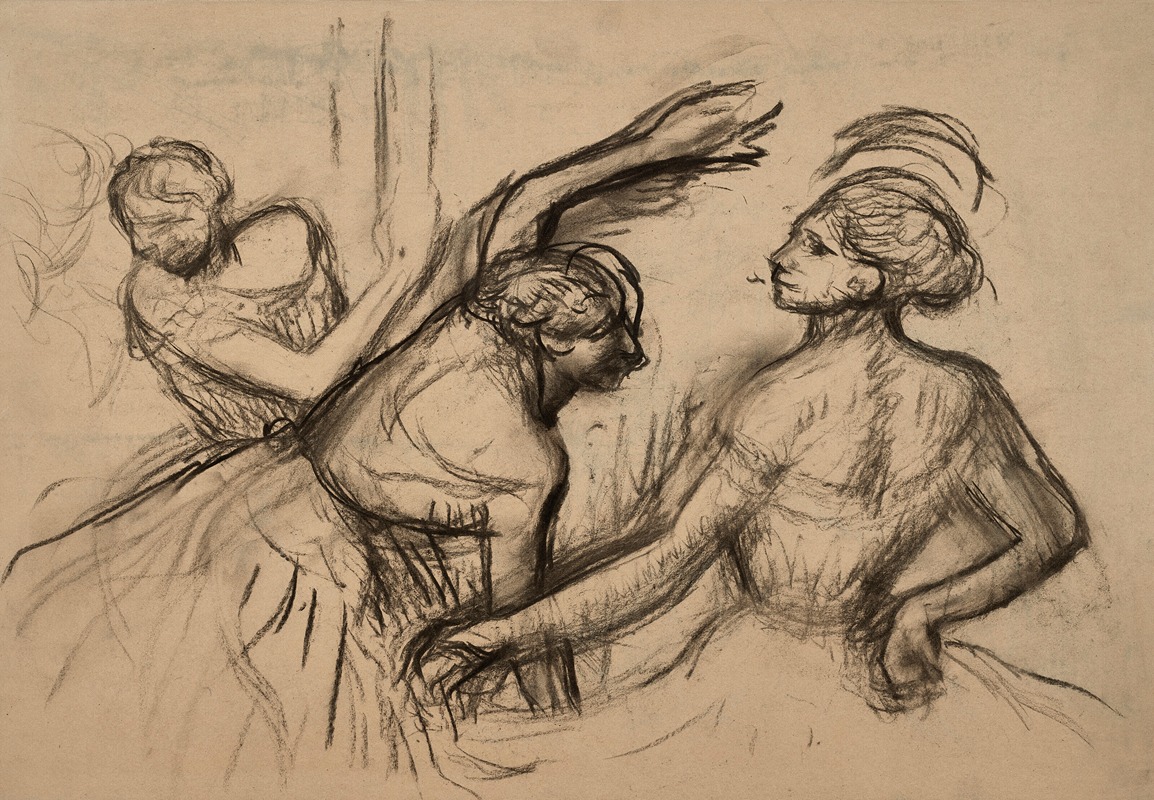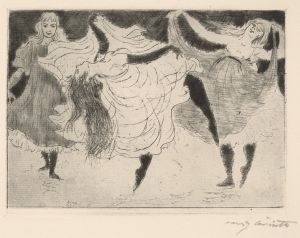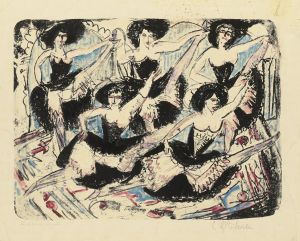
Scène de ballet
A hand-painted replica of Edgar Degas’s masterpiece Scène de ballet, meticulously crafted by professional artists to capture the true essence of the original. Each piece is created with museum-quality canvas and rare mineral pigments, carefully painted by experienced artists with delicate brushstrokes and rich, layered colors to perfectly recreate the texture of the original artwork. Unlike machine-printed reproductions, this hand-painted version brings the painting to life, infused with the artist’s emotions and skill in every stroke. Whether for personal collection or home decoration, it instantly elevates the artistic atmosphere of any space.
Edgar Degas, a prominent French artist associated with the Impressionist movement, is renowned for his depictions of dancers, capturing the grace and dynamism of ballet. One of his notable works in this genre is "Scène de ballet," which exemplifies his fascination with the world of dance and his innovative approach to composition and perspective.
"Scène de ballet" is an oil painting created by Degas in the late 19th century, a period during which he produced numerous works focused on ballet dancers. This painting, like many of his others, reflects his deep interest in the human form and movement, as well as his keen observation of the nuances of performance and rehearsal. Degas often frequented the Paris Opéra, where he found inspiration in the dancers' rehearsals and performances, capturing them in various states of preparation and execution.
The composition of "Scène de ballet" is characterized by its dynamic arrangement and the use of perspective to draw the viewer into the scene. Degas was known for his unconventional viewpoints, often depicting scenes from unusual angles that mimic the effect of a candid photograph. This approach is evident in "Scène de ballet," where the viewer is positioned as if peering into the intimate world of the dancers, observing their movements and interactions from a unique vantage point.
Degas's technique in this painting showcases his mastery of color and light. He employed a palette that captures the delicate textures of the dancers' costumes and the atmospheric lighting of the stage. The interplay of light and shadow adds depth to the composition, highlighting the physicality and poise of the dancers. Degas's brushwork varies from precise detailing in the figures to more fluid and expressive strokes in the background, creating a sense of movement and energy.
One of the defining features of Degas's ballet scenes is his focus on the behind-the-scenes aspects of dance. Rather than idealizing the performance, he often depicted the moments of preparation and practice, offering a more realistic and humanized portrayal of the dancers. This approach is evident in "Scène de ballet," where the dancers are shown in a moment of rehearsal, capturing the discipline and dedication required in their art form.
Degas's interest in ballet was not merely aesthetic; it also reflected his broader exploration of modern life in Paris. The ballet was a significant cultural institution in the city, and by depicting it, Degas engaged with contemporary themes of entertainment, leisure, and the role of women in society. His works, including "Scène de ballet," provide insight into the social and cultural milieu of 19th-century Paris, offering a window into the world of the ballet and its significance within the broader context of French art and society.
In summary, "Scène de ballet" by Edgar Degas is a testament to the artist's innovative approach to capturing movement and his deep engagement with the world of dance. Through his unique perspective and masterful technique, Degas offers a vivid portrayal of ballet, highlighting both its aesthetic beauty and its cultural significance.


















